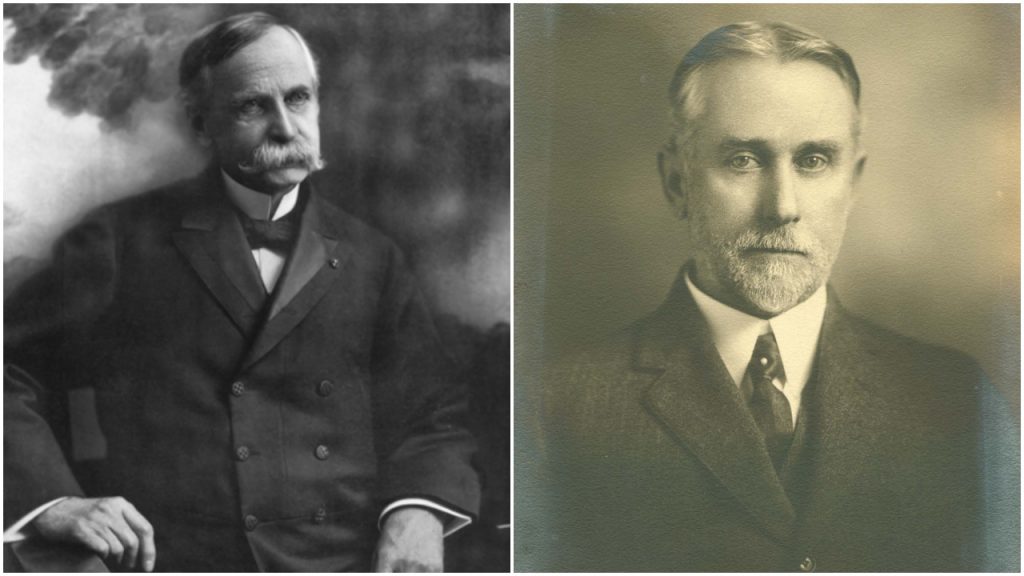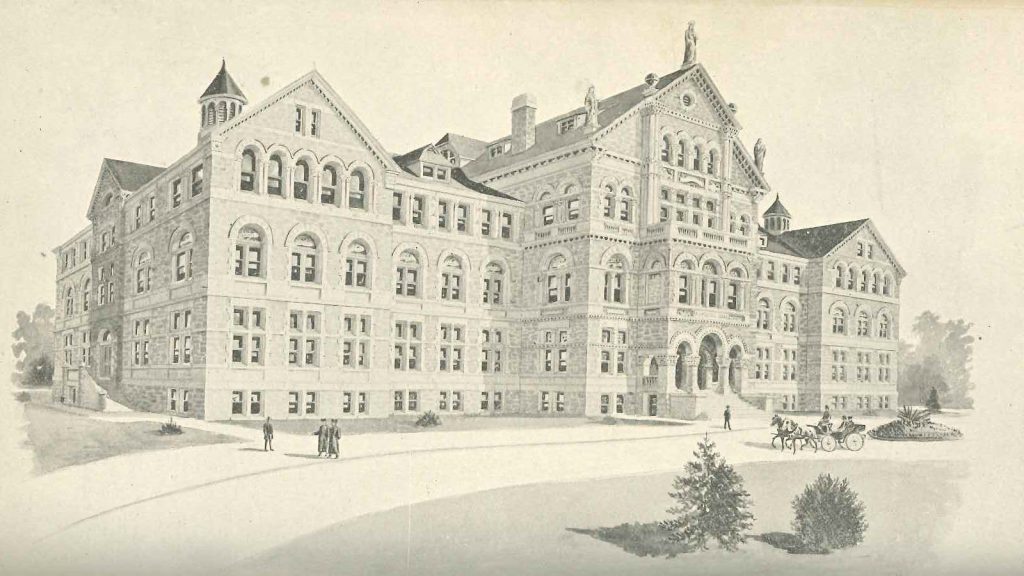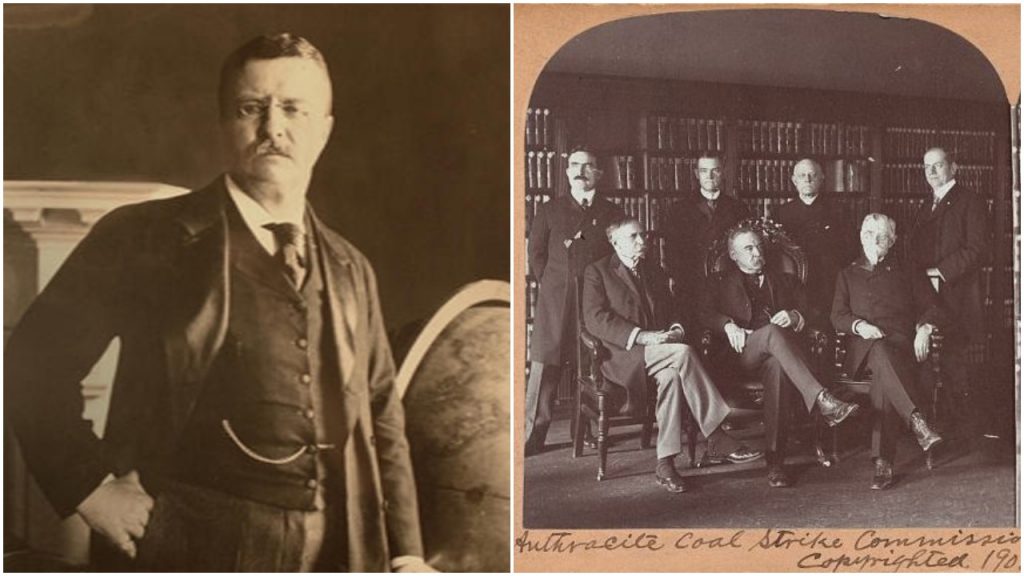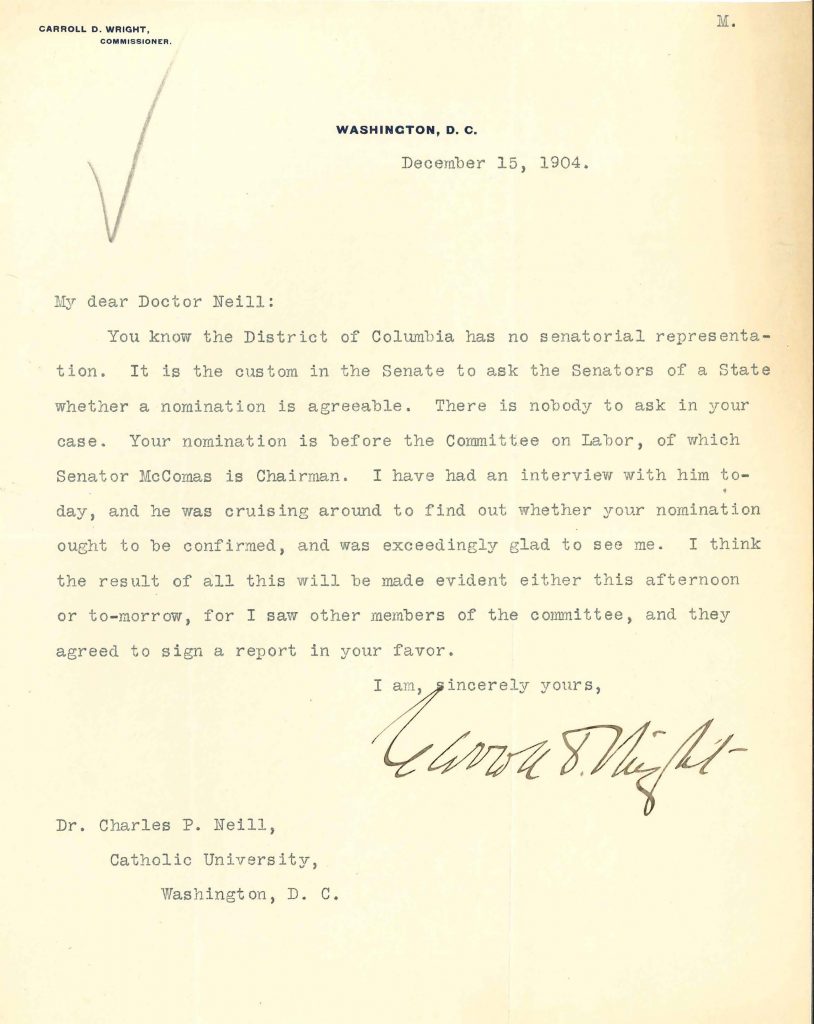
Several previous posts from The Archivist’s Nook explore the rich American labor history resources at Catholic University, especially those that have been digitized. Of course, labor history is intertwined with the history of business, economics, and government. One recent post focused on the first U.S. Secretary of Labor, William B. Wilson, who served 1913-1921 in the presidential cabinet of Woodrow Wilson (no relation). While not a Catholic, William B. Wilson was nevertheless closely allied with Catholic labor leaders John Mitchell and T. V. Powderly. Remarkably, long before Catholic University held the collections of Mitchell and Powderly or was home of the ‘labor priest,’ its founding faculty of Economics were the first two federal labor commissioners, Carroll D Wright (1840-1909) and Charles P. Neill (1865-1942), who headed the Bureau of Labor Statistics, 1885-1913, predecessor to Wilson’s U.S. Department of Labor.
Wright and Neill met at Catholic University where Neil was full time Instructor in Economics (later Professor) and department chair, 1896-1905, while Wright was a part-time Lecturer on Social Economics, 1895-1899, then honorary professor of Social Economics until 1904.[i] Among the early courses taught by Neill and Wright were Special Topics in Economics and several related to Statistics and Labor,[ii] many of which are still offered in 2019 in the Economics Department, part of the School of Arts and Sciences. Since 2013, Catholic University has also been the home of the Tim and Steph Busch School of Business and Economics offering a wide range of coursework in Accounting, Business, Entrepreneurship, Finance, Management, and Marketing.

After the Civil War, amidst calls for a national labor agency, the first state bureau opened in Massachusetts in 1869. However, accusations that early officials promoted labor activism induced the governor to appoint Wright as new bureau chief in 1873. A war veteran, patent attorney, and former state senator, Wright‘s inexperience with statistics and labor problems was overcome by his renowned impartiality.[iii] In 1884, Congress created and the President approved a federal Bureau of Labor. President Chester Arthur passed over several candidates for commissioner from various labor organizations, most notably Terence V. Powderly of the Knights of Labor, and selected Wright in January 1885. Reappointed by successive presidents over the next twenty years, Wright built a reputation as a famous social scientist by focusing on factual investigation to create innovative reports on such issues as tariffs, unemployment, strikes, and wages as well as the condition of women, children, blacks, and immigrants. In 1893, he was also made Superintendent of the Census. Late in his career Wright taught at Harvard and was President of Clark College in Worcester, Massachusetts.

The second Commissioner of Labor, Charles Patrick Neill, a child of Irish immigrants born in Illinois, graduated from Georgetown University in 1891, earned a doctorate in economics and politics from Johns Hopkins University in 1897, and, as mentioned above, was on the CU faculty, 1896-1905. In 1902, Neill was appointed by President Theodore Roosevelt to serve as assistant recorder (Wright was recorder) of the Anthracite Coal Strike Commission addressing a major strike in eastern Pennsylvania. Shortly thereafter, in 1905, Roosevelt selected Neill to succeed Wright as Commissioner of Labor. President William Howard Taft reappointed him in 1909 and Woodrow Wilson appointed Neill Commissioner of Labor Statistics in 1913 when the Bureau of Labor Statistics was established within the new Department of Labor. Neill provided federal mediation services in railroad labor disputes and his investigation of the meat packing industry, prompted by Upton Sinclair’s The Jungle, resulted in a federal inspection law in 1906. In addition, his detailed report on child labor provided a basis for congressional legislation.

After his departure from the
Department of Labor later in 1913, Neill specialized as an arbitrator working
for the Southeastern Railways, 1915-1939, and the United States Railroad Board
of Adjustments, 1919-1921. He also promoted industrial safety and workmen’s
compensation laws. His charitable work included serving as a member of the
Board of Charities of the District of Columbia, and was Director of the National
Catholic School of Social Service,
1921-1922. He had positions of leadership in professional societies like the
American Statistical Association and was honored by Notre Dame with the Laetare
Medal in 1922. A small collection of Carroll D. Wright’s
Papers can be found at Cornell while the
Archives at Catholic University houses the Charles
P. Neill Papers while records of the
U.S. Department of Labor and predecessor Bureau of Labor are at the National
Archives.
[i] Hooker, John J. ‘Seven Decades of Economics,’ The Catholic University of America Bulletin (33: 4), April 1966, pp. 11.
[ii] Annual Report of the Rector of The Catholic University of America, March 1896, p. 35; Year-Book of the Catholic University of America, 1896-1897, pp. 52-53.
[iii] Goodberg, Joseph P. and Moye, William T. The First Hundred Years of the Bureau of Labor Statistics. Washington, D.C.: U.S. Government Printing Office, 1985, p. 7, 11.
